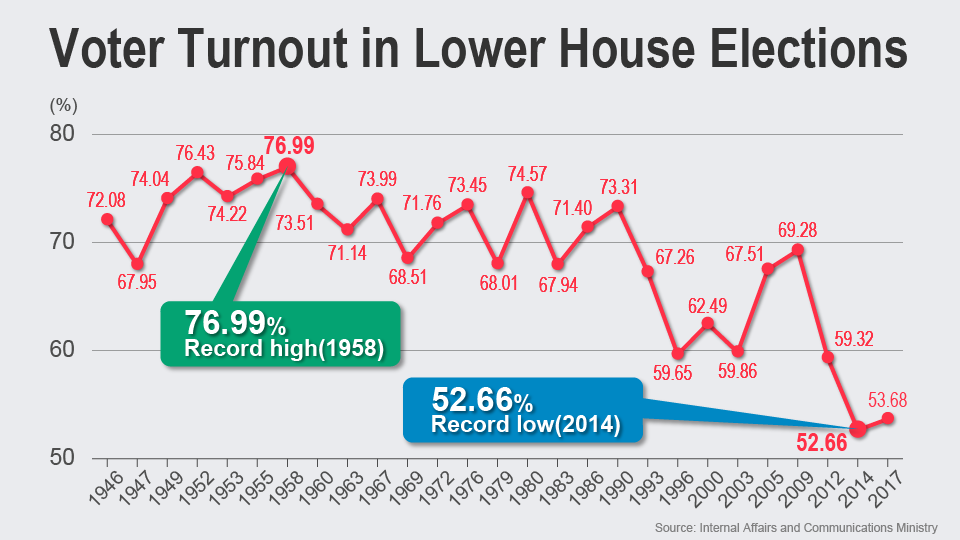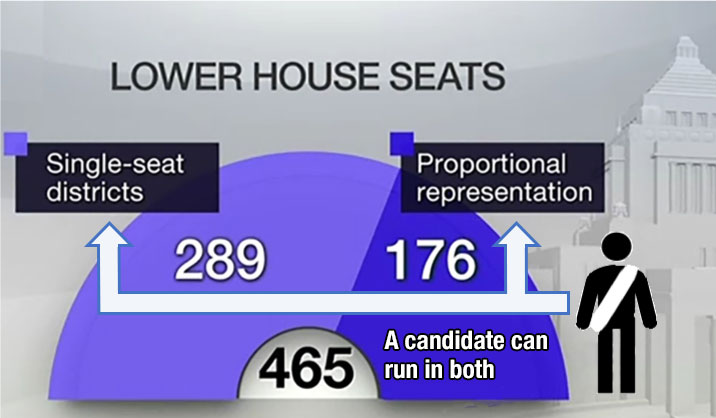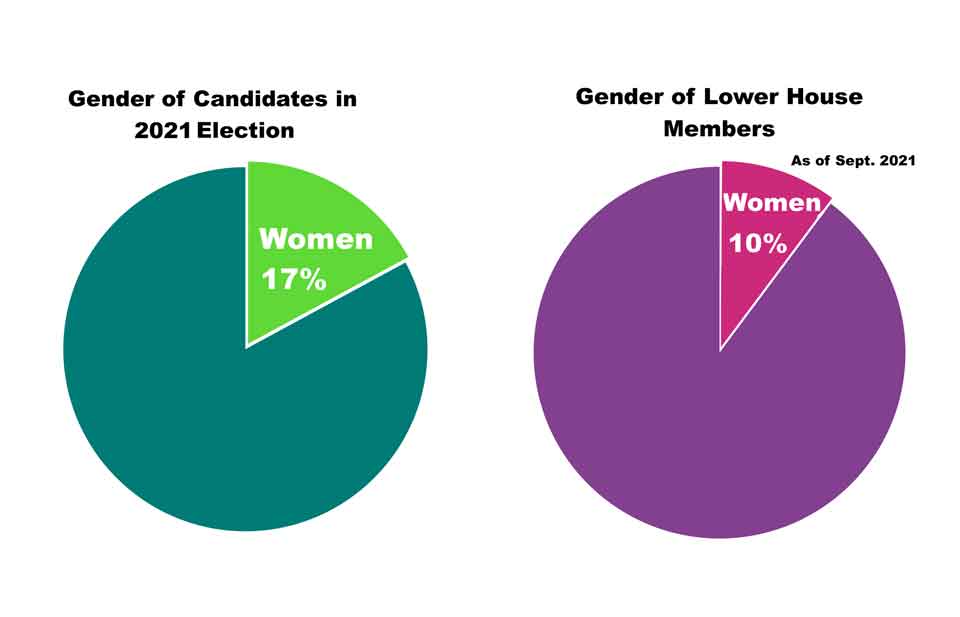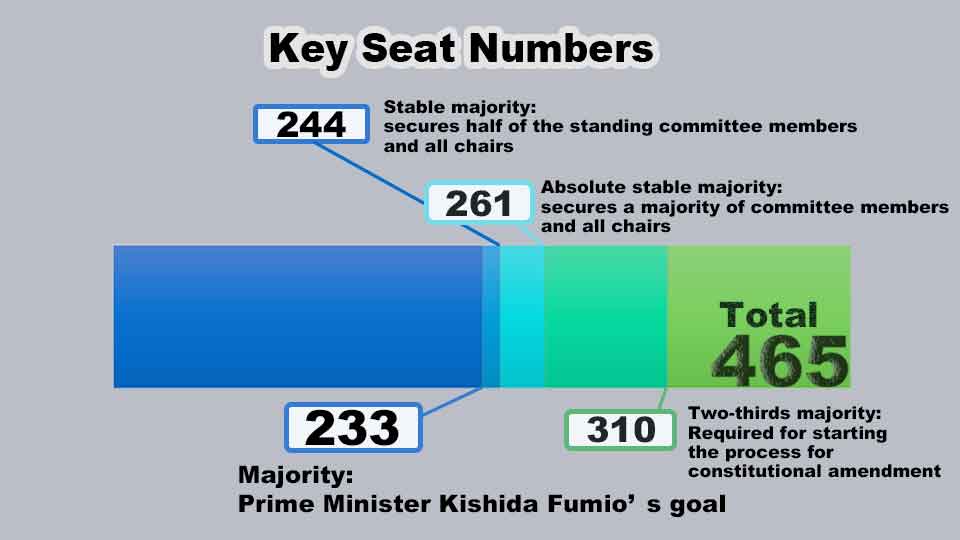1) Voter turnout
Voter turnout for Japan’s general elections hit a record in 1958, when the newly founded Liberal Democratic Party first filed candidates.
The figure consistently hovered around 70%, but then plunged with the introduction of the current electoral system in 1996. New rules were aimed at easing competition among same-party candidates in the same districts. Turnout hit a record low of 52% in 2014.
The modern era is marked by age discrepancy: at the last election, only about 30% of people aged between 20 and 24 went to the polls. That compares with 74% of those aged between 70 and 74.

2) Some candidates who lose single-seat districts may get a second chance
Candidates can run in either or both the single-seat constituency and proportional representation tiers.
In the proportional representation tier, voters cast their ballot for a party or political group, and the winning candidate will be determined according to a pre-given rank.
Candidates who lose in their constituency still have a chance to be elected through the proportional representation tier, but only if they secured at least one tenth of the valid votes in the single-seat race.

3) Women in the Diet
Japanese women were first granted the right to run for a seat in the Diet in the 1946 general election, which was held under a new post-war election law. Thirty-nine women were elected to the Lower House.
In the 2021 election, 186 women are running. That’s 17 percent of the total.
The Cabinet Office says only 10% of the house was female as of the end of last month, lagging behind other countries like France (39%), Britain (33%) and the United States (23%).

4) Key numbers
465
The total number of Lower House seats being contested.
233
The number required to pass a bill in a plenary session. Prime Minister Kishida Fumio says he aims to secure a majority along with coalition partner Komeito.
244 – the ‘stable majority’
This allows a party or coalition to chair all 17 standing committees in the Lower House and secure the same number of seats as the opposition within each one. If opinions differ between members, a chair can approve a bill and send it to the plenary.
261 – the ‘absolute stable majority’
This allows for a majority of committee members as well as chairpersons. Such dominance allows a party or bloc to smoothly push through bills.
310 – two-thirds majority.
If a bill passed by the Lower House is voted down by the Upper House, the more powerful lower chamber can pass it again with approval among more than two-thirds of its members.
A two-thirds majority is also needed in both chambers to start the process for constitutional amendment and a national referendum.


